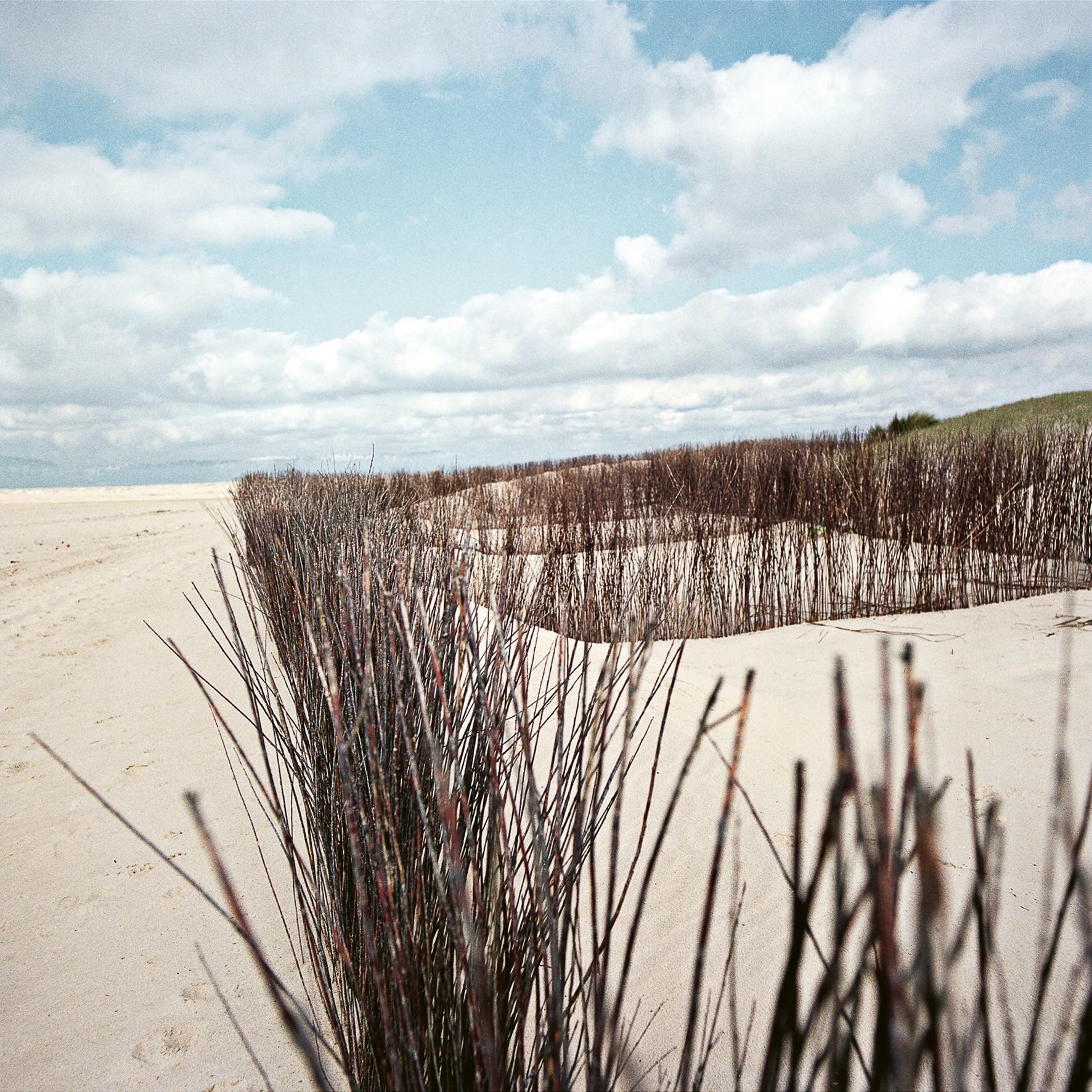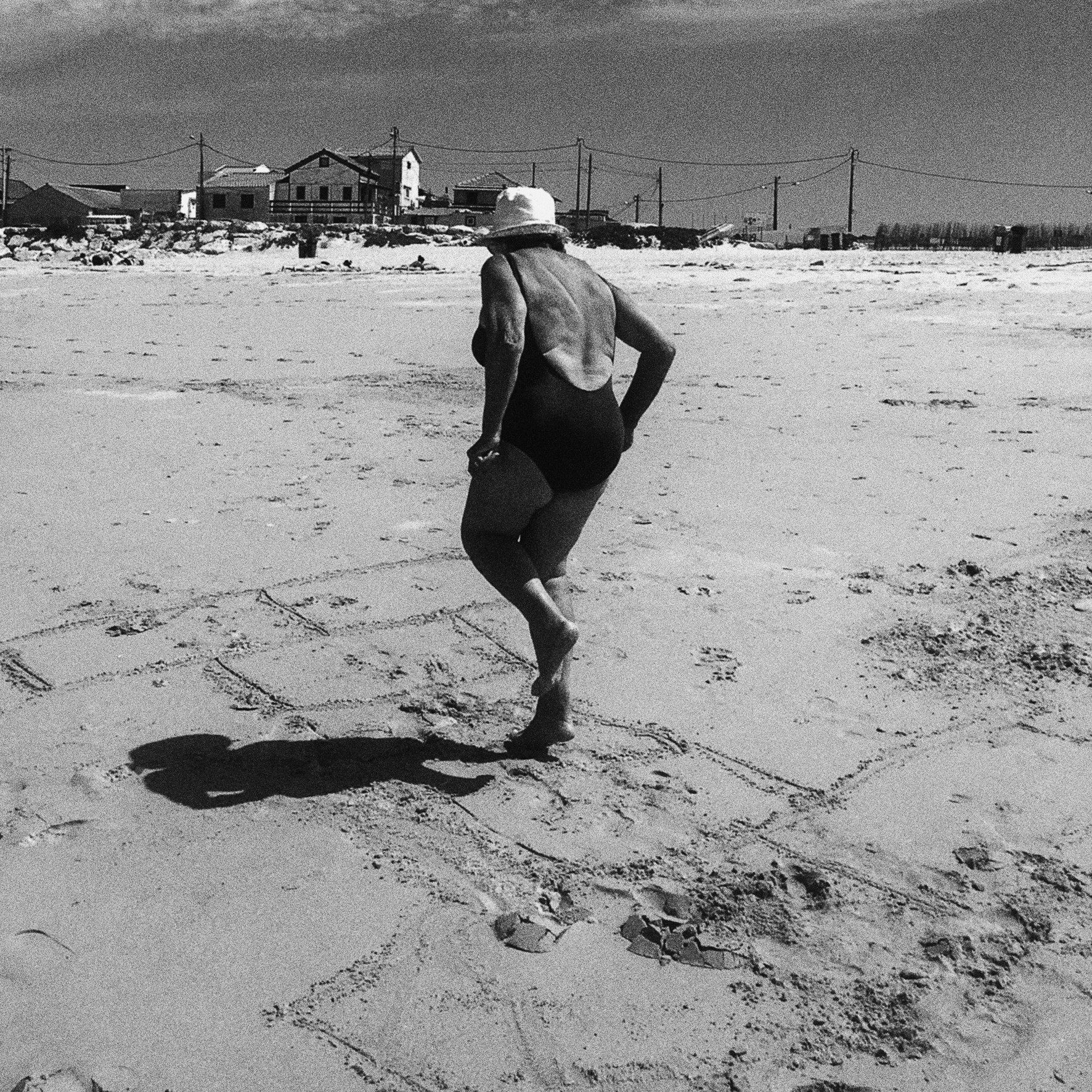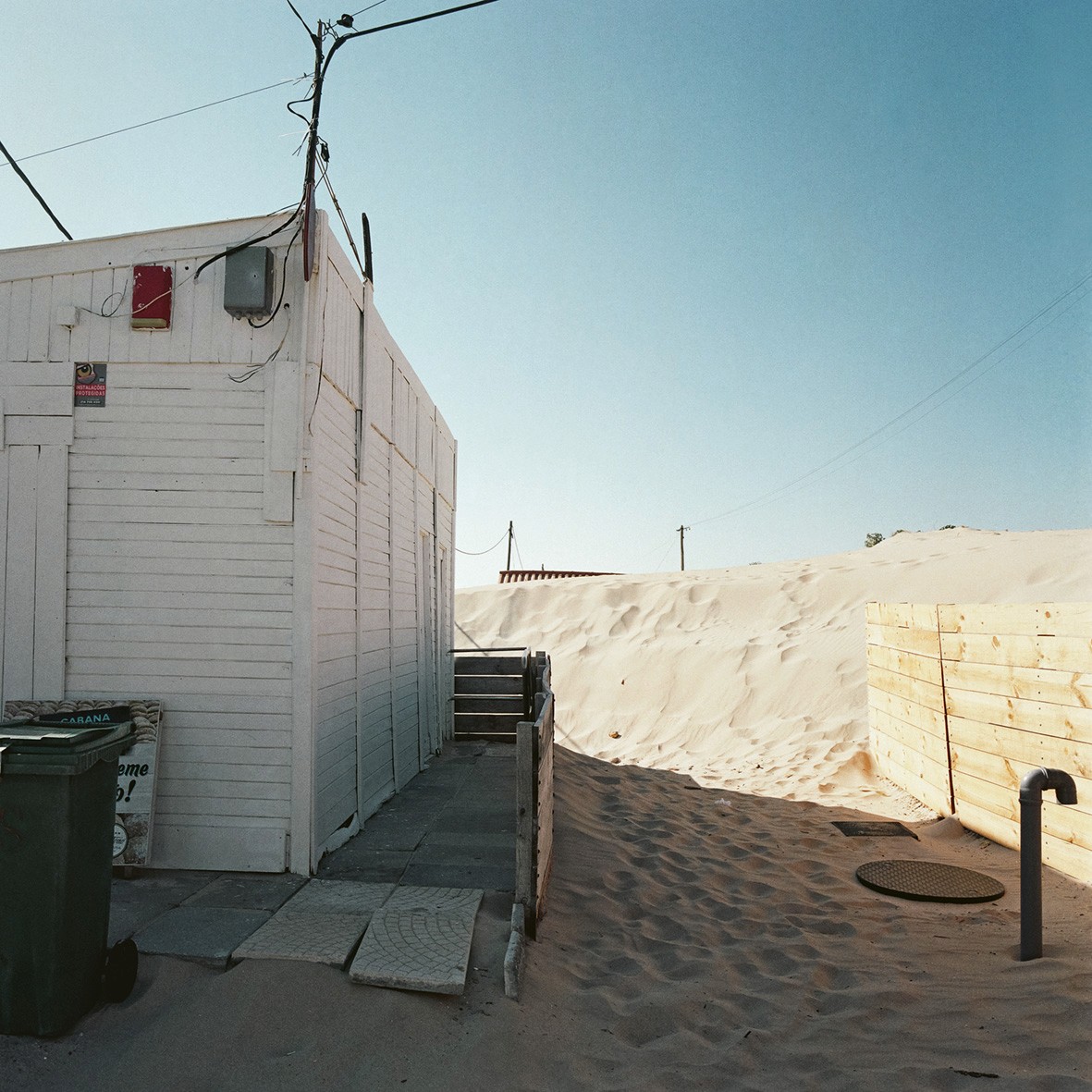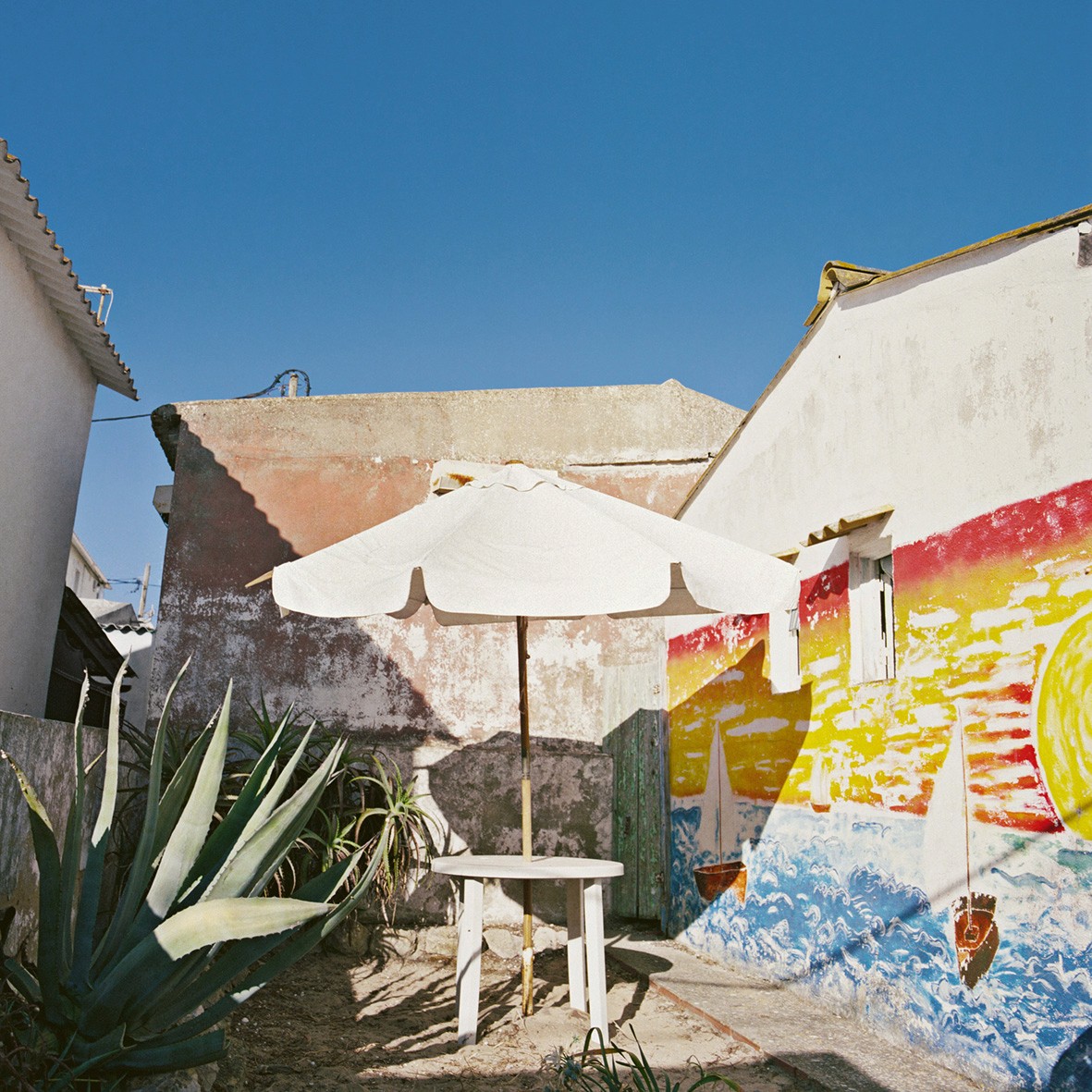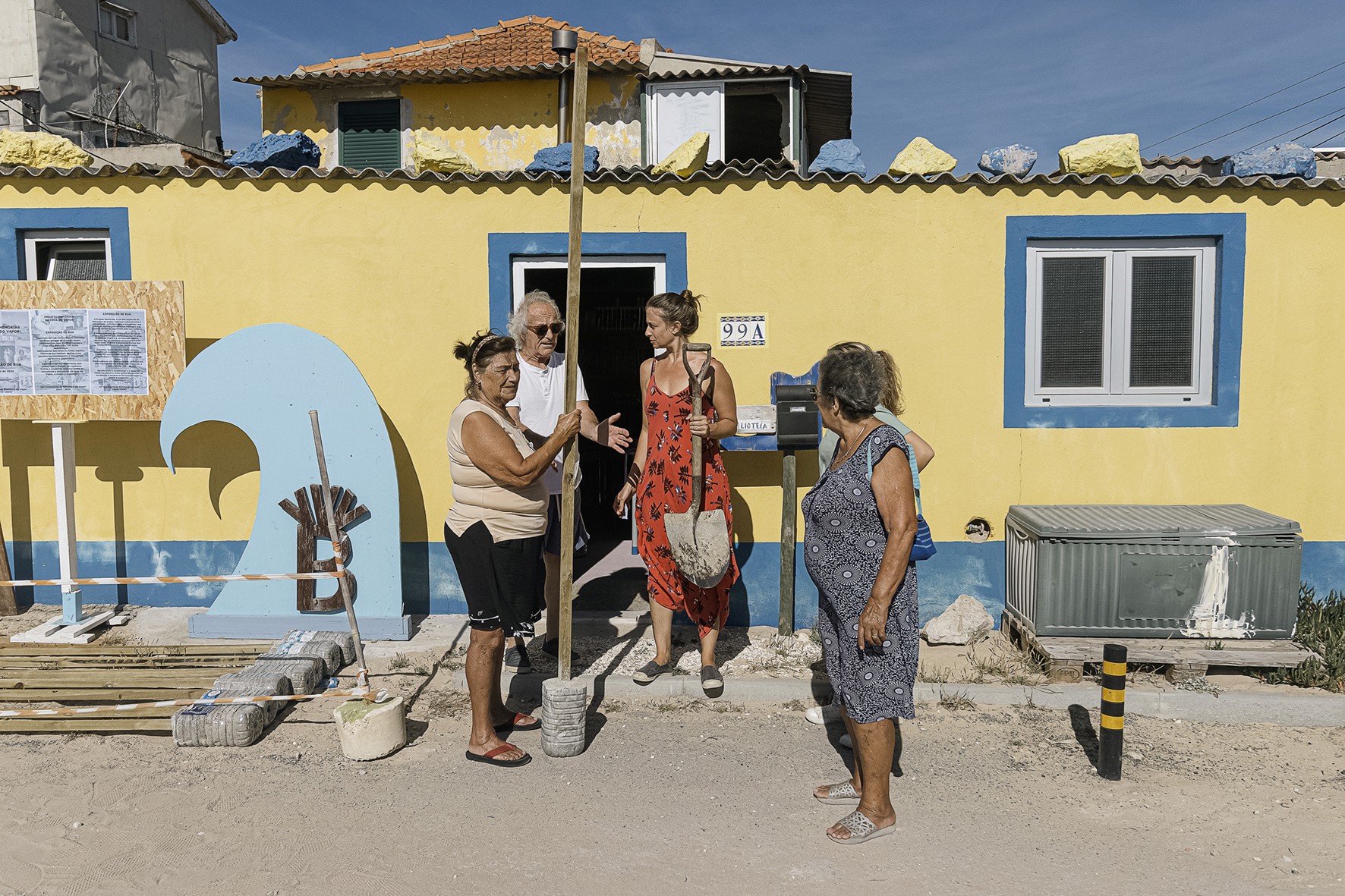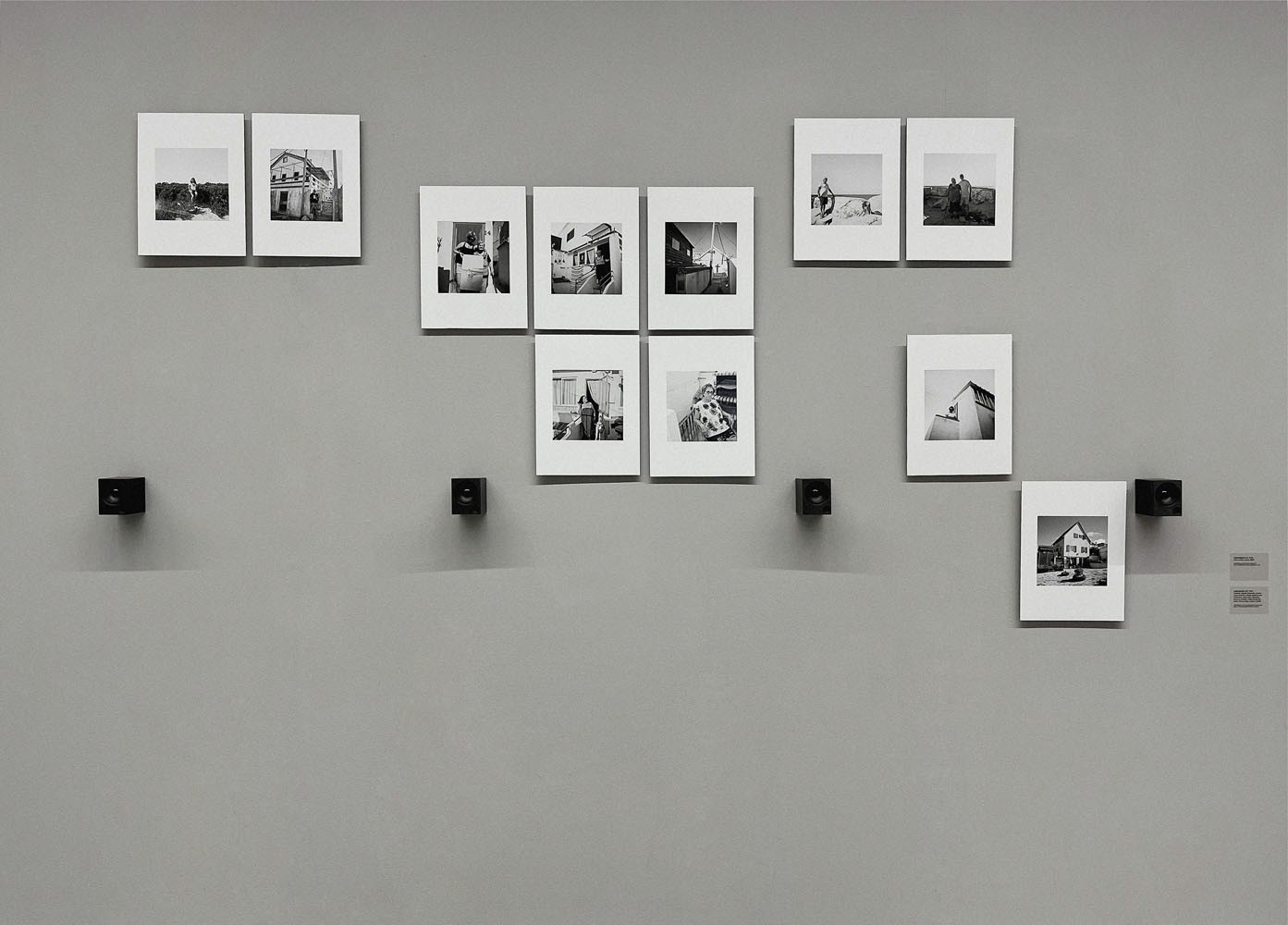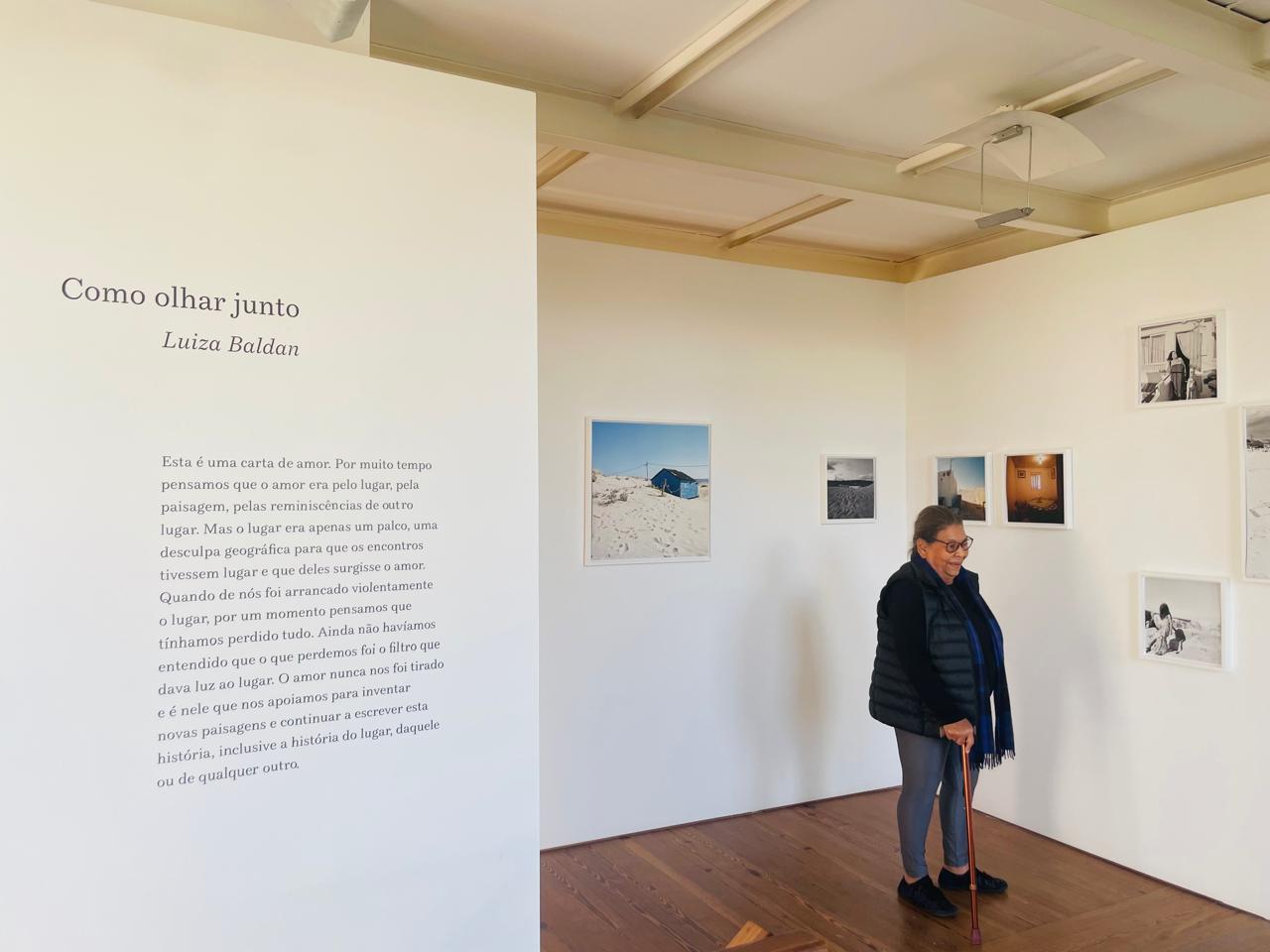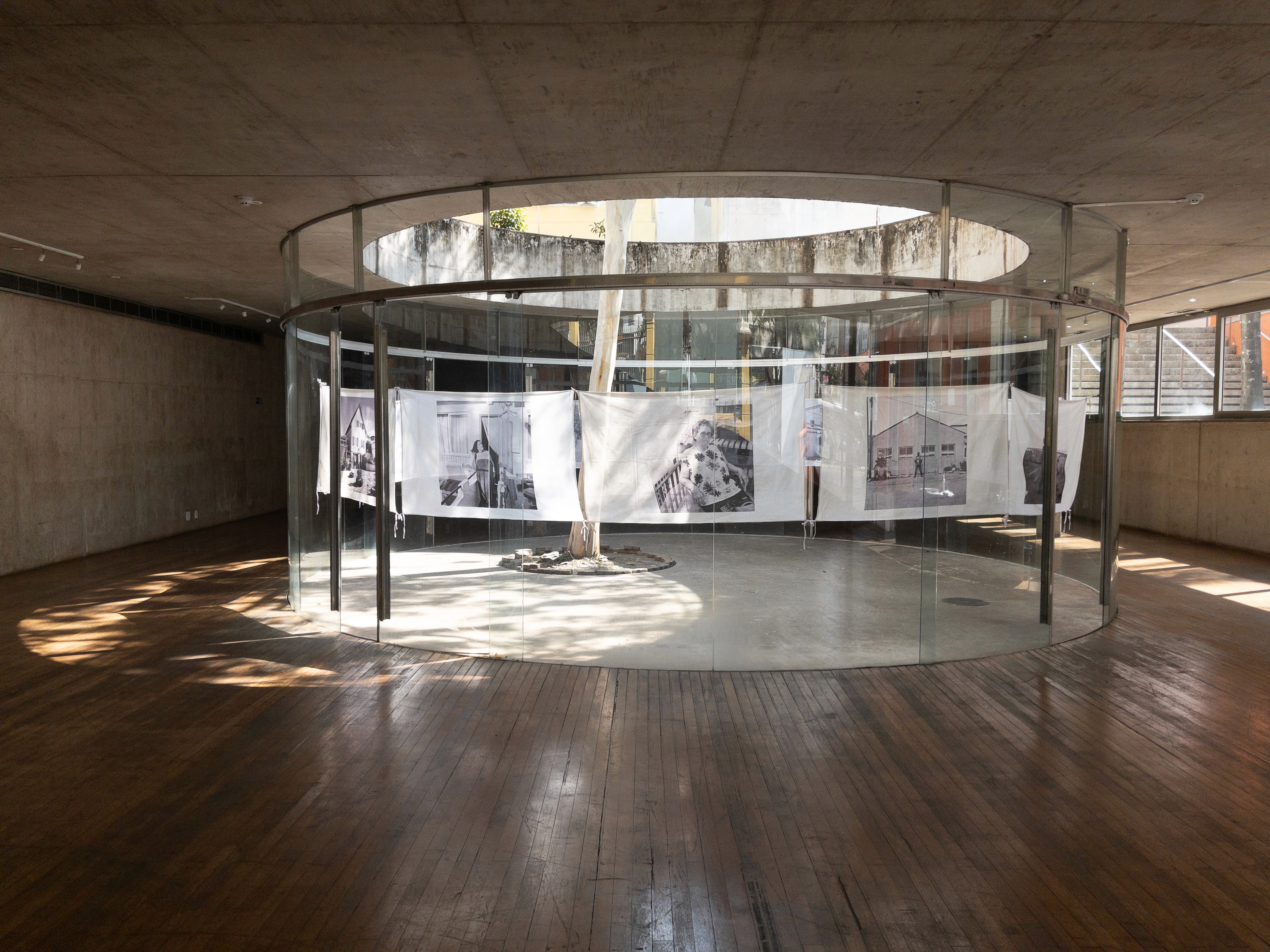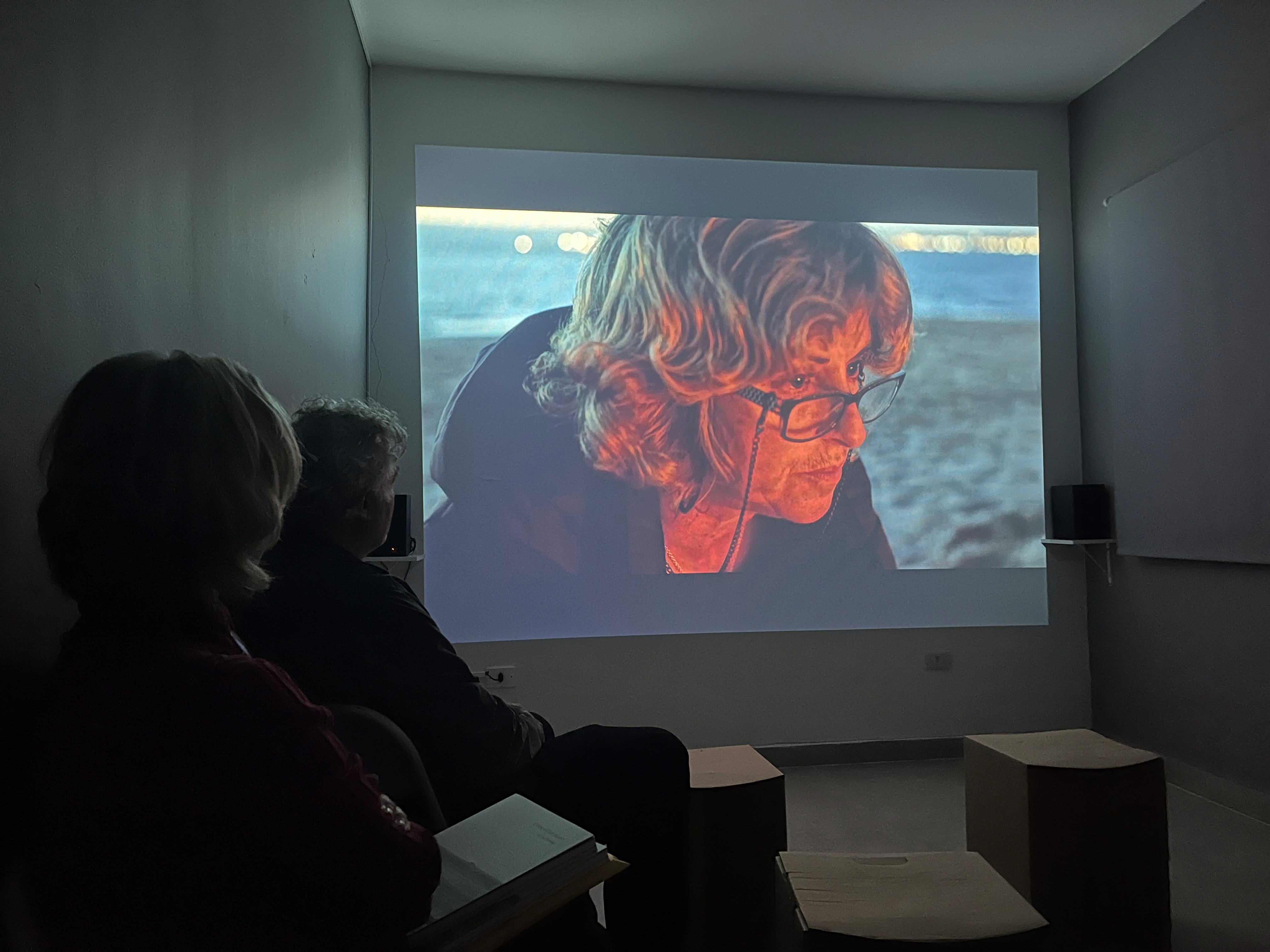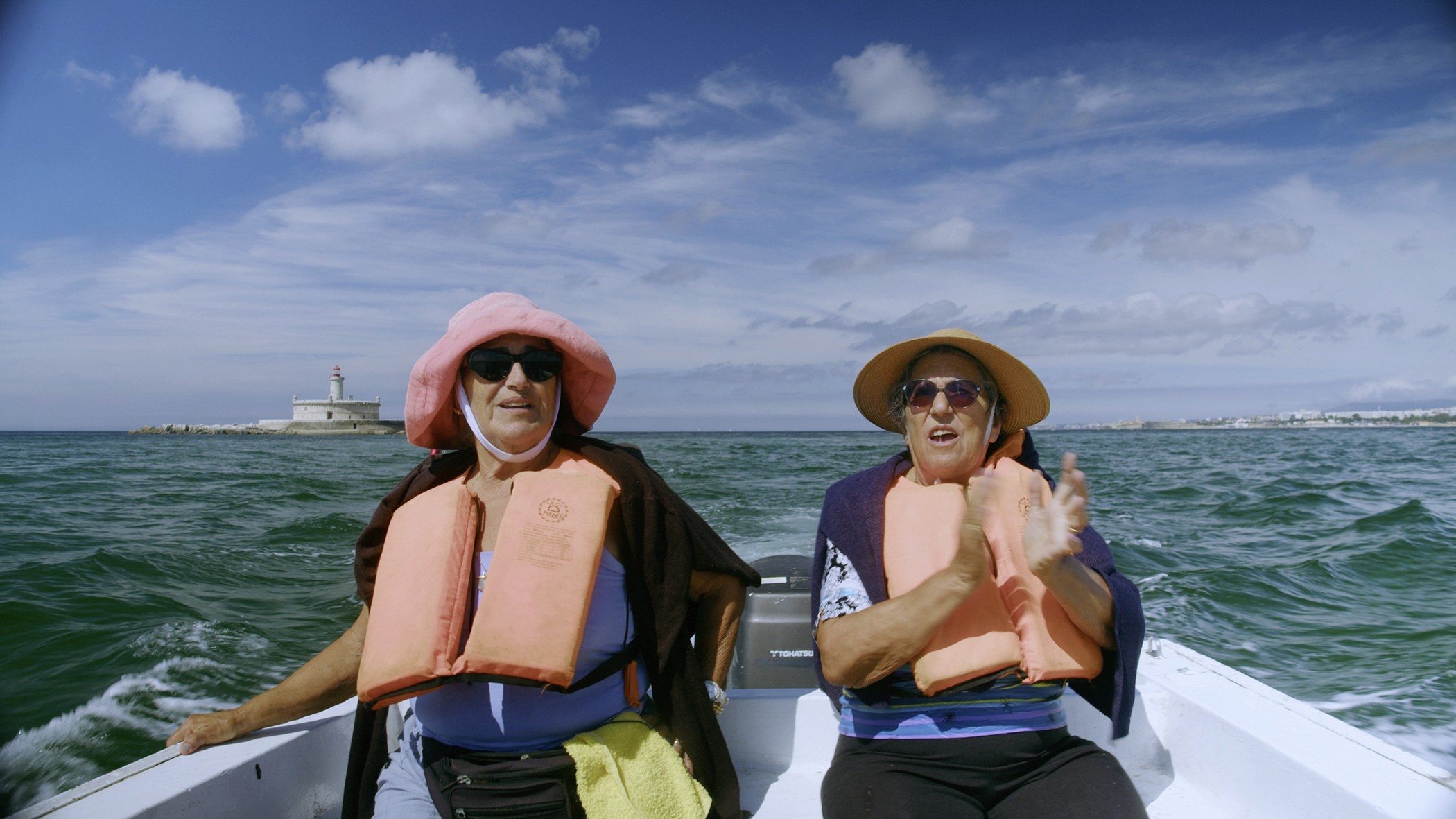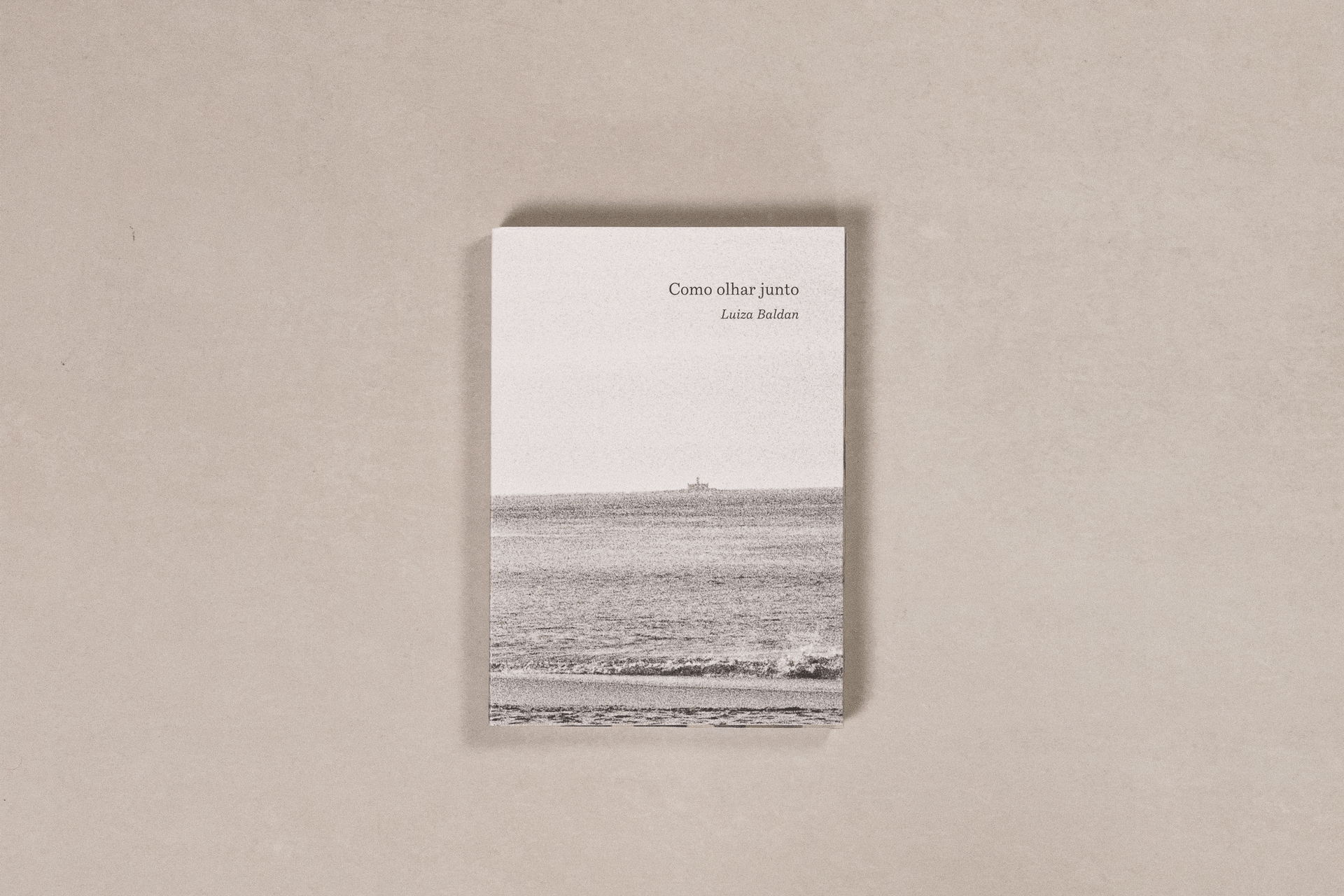Trafaria/Cova do Vapor (PT)
Projeto
O projeto investiga memórias, paisagens e relações comunitárias na Cova do Vapor, Portugal. Entre encontros na Biblioteca do Vapor, histórias de vida e observações sensoriais, busca resgatar afetos e narrativas de um território em constante transformação. Guiado por uma publicação construída a partir da observação compartilhada sobre pertencimento, identidade e resistência, o projeto reúne texto e fotografias de Baldan e um vídeo realizado com Patrícia Black, que combina duas performances feitas na praia com moradores do vilarejo. A partir desse vídeo, Baldan conduz palestras performáticas ao lado do artista sonoro Nico Espinoza. O conjunto da obra reflete sobre a contínua reinvenção desta e de qualquer paisagem.
**
A aldeia (da Cova do Vapor) estava a ser empurrada pela água em direção à Mata de São João, forçando os seus habitantes a recuar, 'caminhando com as suas casas às costas' em carroças de bois".
Esta imagem foi determinante para iniciar a investigação sobre a comunidade, os seus agentes, bem como os movimentos de permanência e deslocamento no local, em parte impulsionados pela própria natureza e pelos fenômenos de erosão, em parte resultantes da ocupação sazonal e desordenada do território. É na combinação de pontos de vista, afetivos e críticos, locais e estrangeiros, de crianças a idosos, que o trabalho se desenvolve.
Em julho de 2023 deu-se início à primeira etapa da minha residência na região, em uma das cabanas de madeira que foi transferida da Cova do Vapor para a Trafaria na década de 1950 por conta do avanço do mar.
Relatos e fotografias antigas foram primeiramente mostrados pelo Eduardo Gomes, responsável pela Biblioteca do Vapor, até então situada à beira mar em um pequeno imóvel doado à associação de moradores, local que um dia foi o Bar da Mimi. Ali realizei grande parte do projeto “Como Olhar Junto”, um trabalho de escuta e pesquisa colaborativa na comunidade da Cova do Vapor, em especial com um grupo de habitantes idosos, muitos deles voluntários para o funcionamento da biblioteca, que foi estimulado a identificar casas, memórias, amores, sonhos, paixões, alegrias, desejos e conflitos, em encontros semanais que se transformaram em um espaço seguro e transversal de partilha. Os participantes, frequentadores da praia como veraneantes ainda na década de 1940, hoje são residentes que vivenciaram o início da tímida urbanização e também o significativo avanço do mar a partir da década de 1950 que submergiu quase 2km de praia conhecida então como o Bico da Areia, que na maré baixa podia-se caminhar até o Farol do Bugio, onde na maré baixa era possível caminhar até o Farol do Bugio, marco entre o Oceano Atlântico e o Rio Tejo. São essas pessoas, a maioria matriarcas que, por possuírem laços extremamente sólidos com o lugar e a comunidade, reavivam contos, personagens e paisagens, ajudando a fortalecer os vínculos para as gerações atuais e futuras. E são essas pessoas, suas histórias orais e nossos afetos que se misturam à história de constituição da Cova do Vapor e que dão vida a este projeto.
[A Biblioteca do Vapor foi encerrada pela Associação de Moradores da Cova do Vapor e aguarda futuras instalações ainda incertas.]
Project
The project investigates memories, landscapes and community relations in Cova do Vapor, Portugal. Between meetings at the Vapor Library, life stories and sensory observations, it seeks to recover affections and narratives of a territory in constant transformation. Guided by a publication built on shared observations about belonging, identity, and resistance, the project brings together Baldan's text and photographs and a video made with Patrícia Black that combines two performances made on the beach with residents of the village. From this video, Baldan conducts performance talks alongside sound artist Nico Espinoza. The work as a whole reflects on the continual reinvention of this and every landscape.
**
The village (of Cova do Vapor) was being pushed by the water towards Mata de São João, forcing its inhabitants to retreat, 'walking with their houses on their backs' in ox carts."
This image was decisive in starting the investigation into the community, its agents, as well as the movements of permanence and displacement in the place, partly driven by nature itself and the phenomena of erosion, partly resulting from the seasonal and disorderly occupation of the territory. It is in the combination of affective and critical points of view, local and foreign, from children to the elderly, that the work develops.
July 2023 saw the start of the first stage of my residency in the region, in one of the wooden huts that was moved from Cova do Vapor to Trafaria in the 1950s due to the advance of the sea.
Old stories and photographs were first shown to me by Eduardo Gomes, who was in charge of the Vapor Library, which until then had been located on the seafront in a small building donated to the residents' association, a place that had once been Mimi's Bar. There I carried out a large part of the “How to look together” project, a collaborative listening and research project in the Cova do Vapor community, especially with a group of elderly residents, many of whom volunteered to run the library, who were encouraged to identify homes, memories, loves, dreams, passions, joys, desires and conflicts, in weekly meetings that became a safe and transversal space for sharing. The participants, who frequented the beach as summer vacationers in the 1940s, are now residents who experienced the beginning of timid urbanization and also the significant advance of the sea from the 1950s onwards, which submerged almost 2 km of beach, known at the time as Bico da Areia, where at low tide it was possible to walk to the Bugio Lighthouse, a landmark between the Atlantic Ocean and the Tagus River.
Translated with DeepL.com (free version) It is these people, most of them matriarchs, who, because they have extremely strong ties to the place and the community, revive tales, characters, and landscapes, helping to strengthen ties for current and future generations. And it is these people, their oral histories, and our affections that blend into the history of the constitution of Cova do Vapor and give life to this project.
[The Vapor Library was closed by the Cova do Vapor Residents' Association and is awaiting future premises, which are still uncertain.]
